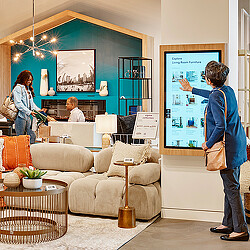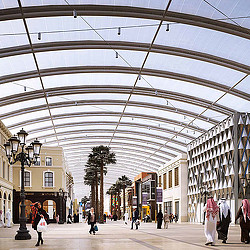Designing Tomorrow’s Shopping Centers: Global Ideas From Kuwait, Costa Rica, and Beyond
Around the world, developers are experimenting with new models that expand the meaning of “retail.”

Retail and mixed-use environments are evolving beyond their traditional roles as shopping destinations. Increasingly, they are being reimagined as cultural stages, wellness destinations, entertainment hubs, and community anchors — places that blend commerce with connection, leisure, and a sense of belonging.
The days of the conventional, single-use shopping center with its one-note experience are well behind us.
From Kuwait to Cairo to Costa Rica, developers are experimenting with new models that expand the meaning of “retail.” For U.S. retail designers, these examples offer valuable lessons for an era defined by shifting consumer behavior, climate pressures, and the need to create authentic community experiences.
Below are six global design strategies that can inform how we reimagine the next generation of American retail centers.
Strategy 1: Design Districts, Not Boxes
Today’s retail districts are becoming multi-persona destinations where visitors can find unique and varied experiences. Rather than organizing around leasable square footage, these environments are designed around distinct user journeys.
At The Avenues in Kuwait City, we developed twelve architecturally distinct districts, each inspired by global urban typologies such as Soho or the Champs-Élysées. Under a translucent ETFE roof that provides daylight and climate comfort, each district offers its own rhythm, character, and sense of place.
Takeaway: For U.S. developers, especially those repositioning aging malls, creating architecturally diverse, story-driven zones can transform shopping into exploration. Design should prioritize identity, variety, and human experience over uniformity and tenant mix alone.
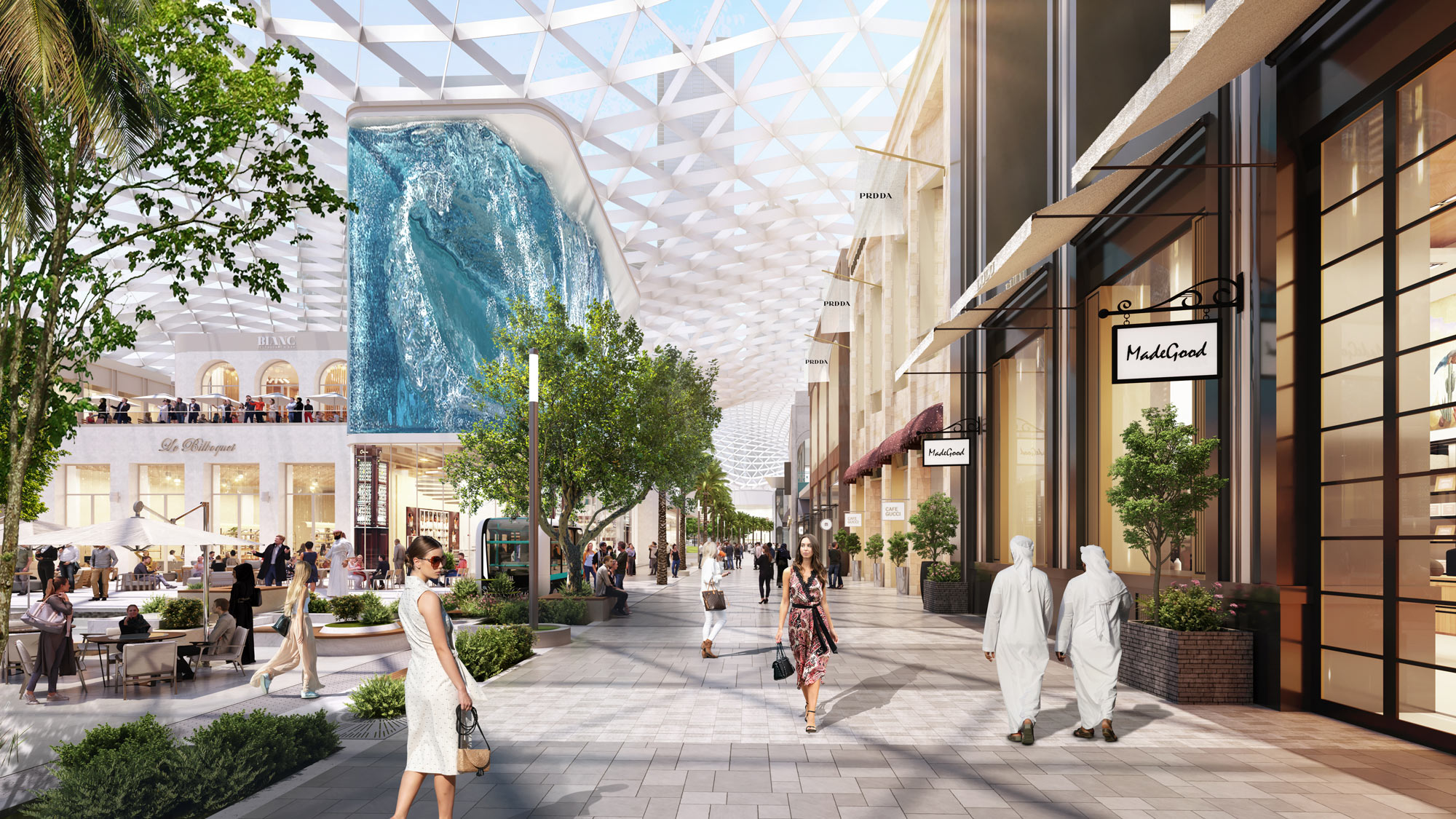
Strategy 2: Bring the Outdoors In
In hot, arid climates, comfort and spectacle often define the retail experience. The design concept for Meydan Mall reimagines the traditional enclosed mall as a vast “Great Indoors” — an environment that captures the vibrancy of outdoor urban life within a climate-controlled setting.
A sweeping glass gridshell roof encloses a landscape of gardens, orchards, and promenades anchored by water features and luxury retail. While the full project is still in development, the underlying idea — to blend natural daylight, greenery, and climate comfort at a grand scale — offers a valuable precedent for regions facing extreme weather.
Takeaway: As U.S. cities experience increasingly intense heat, investing in climate-responsive design that integrates natural light, biophilic elements, and indoor public spaces can enhance comfort and extend usability. For large-format retail spaces, the future lies in simulating the outdoors within.

Strategy 3: Retail as Community Anchor
Today’s most successful retail environments function as social infrastructure — places where daily life unfolds, not just shopping. Dubai Festival City demonstrates how retail can anchor a broader ecosystem that includes schools, offices, housing, and leisure.
This waterfront community, situated along Dubai Creek, is designed around walkable promenades, public plazas, and family-oriented attractions, including an outdoor event park and a kinetic water show. Retail operates as the social heart of a complete live-work-play environment.
Takeaway: In the U.S., malls and shopping centers can evolve into the connective fabric of mixed-use neighborhoods. Integrating residential, workplace, and cultural uses — supported by safe, pedestrian-friendly streets — turns retail from a destination into a daily anchor of community life.
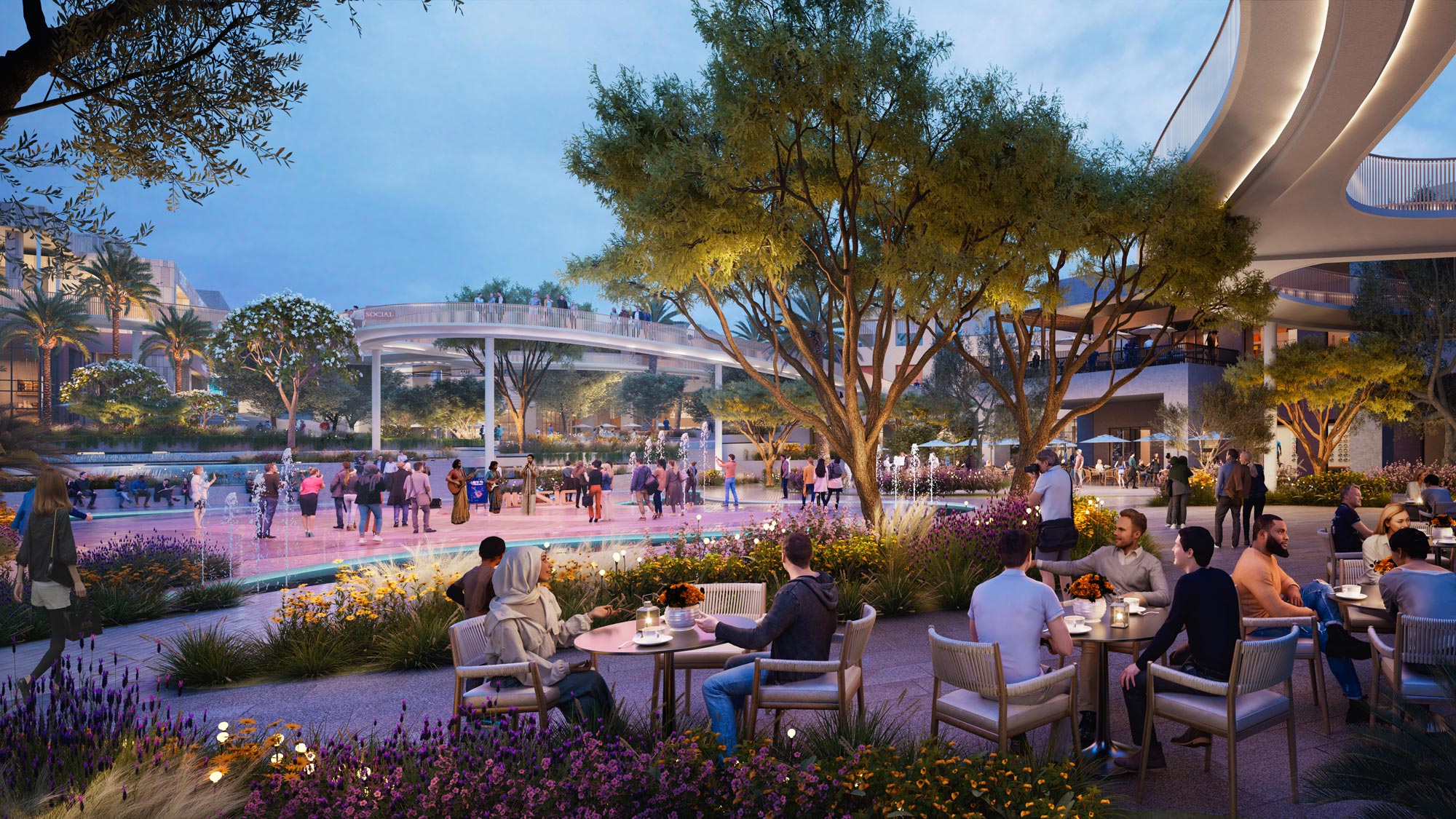
Strategy 4: Design for the 20-Minute City
Urban and suburban lifestyles are merging around the idea of proximity. Cairo Festival City exemplifies the “20-minute city” concept by placing housing, offices, retail, hospitality, and entertainment within a short walk or ride.
The district’s “Festival Living” model blends tranquil residential streets with lively social zones, including creative offices, hotels, and dining clusters — all integrated by walkable public spaces.
Takeaway: In the U.S., this model offers a roadmap for suburban transformation. By repositioning retail centers into self-contained, mixed-use ecosystems, developers can reduce car dependence and create neighborhoods that sustain foot traffic and loyalty through convenience and connection.
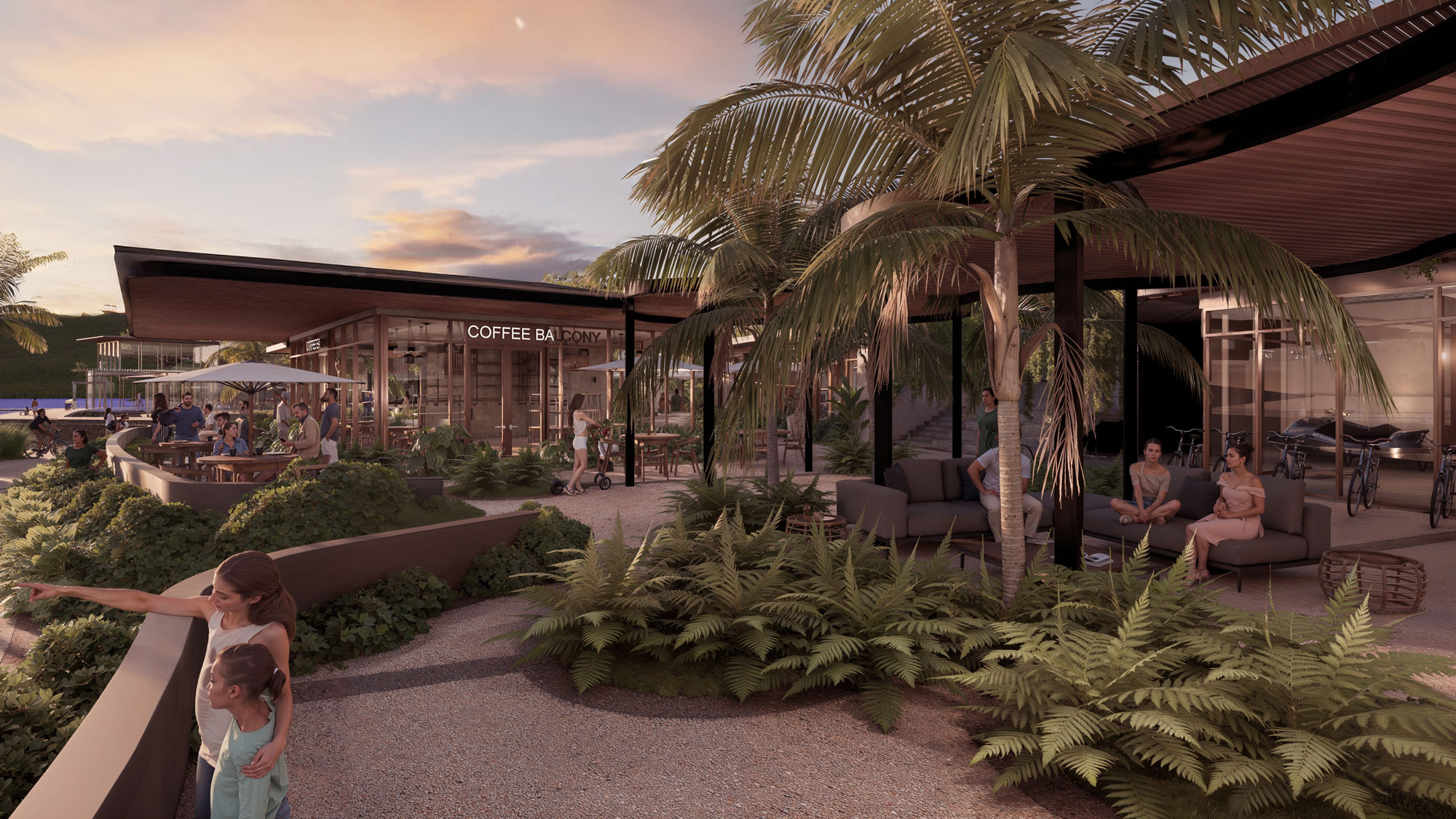
Strategy 5: Design with Nature, Not Over It
As climate and wellness become central to consumer values, retail must align with its natural context. On Costa Rica’s Pacific coast, the Peninsula Papagayo resort seamlessly integrates its retail and dining village into the surrounding landscape, blurring the line between built and natural environments.
Shaded pathways, open-air dining, and architecture that follows the contours of the land create an immersive experience rooted in ecology and authenticity. The result is an eco-luxury community where commerce and conservation coexist.
Takeaway: For U.S. coastal, desert, or mountain markets, designing retail that embraces biophilia, local materials, and passive comfort can transform shopping into a restorative, nature-connected experience. Sustainability becomes not a layer of technology but a defining spatial narrative.
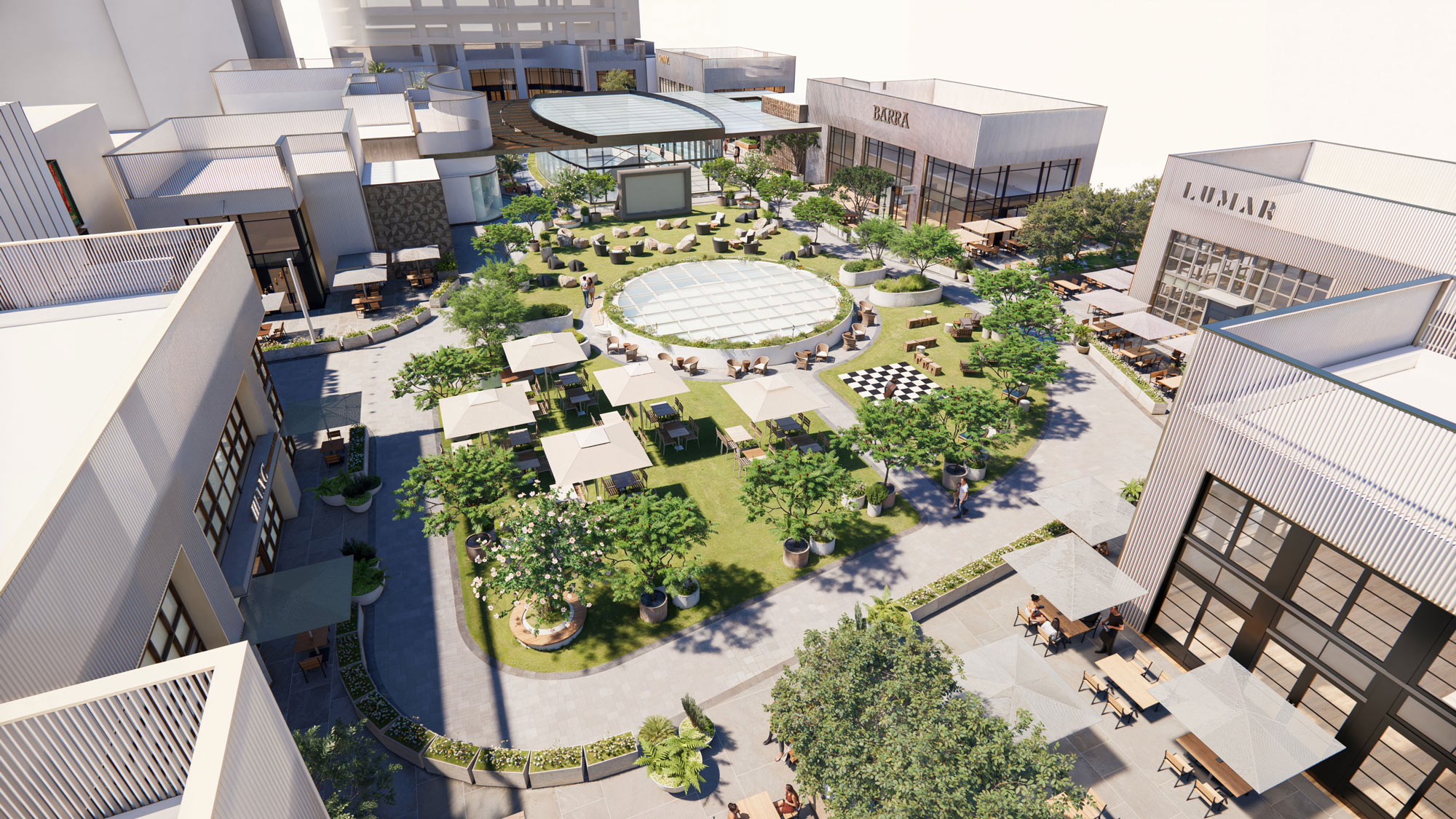
Strategy 6: Design for Experience, Not Just Consumption
The future of retail lies in how it makes people feel, not how much they buy. Airia Mall near Delhi exemplifies this evolution through its multi-sensory, event-driven design that blends entertainment, dining, and workspaces.
With a seven-screen multiplex, rooftop dining, and frequent public programming, the mall invites visitors to stay longer, explore more, and form emotional connections. Lighting, acoustics, and circulation all contribute to a feeling of ease and comfort.
Takeaway: In U.S. markets, particularly struggling regional malls, investing in ambiance, programming, and human-scale design can reframe retail as a social experience. The measure of success becomes not square footage leased but time well spent.
Retail has always reflected the culture of its time. Today, it represents more than commerce — it is a canvas for community life, creativity, and connection.
From Kuwait to Costa Rica, the lesson is consistent: the strongest retail environments aren’t defined by what they sell, but by what they mean to the people who gather there. The best ideas aren’t always local, but the best places feel like they are.
For media inquiries, email .





